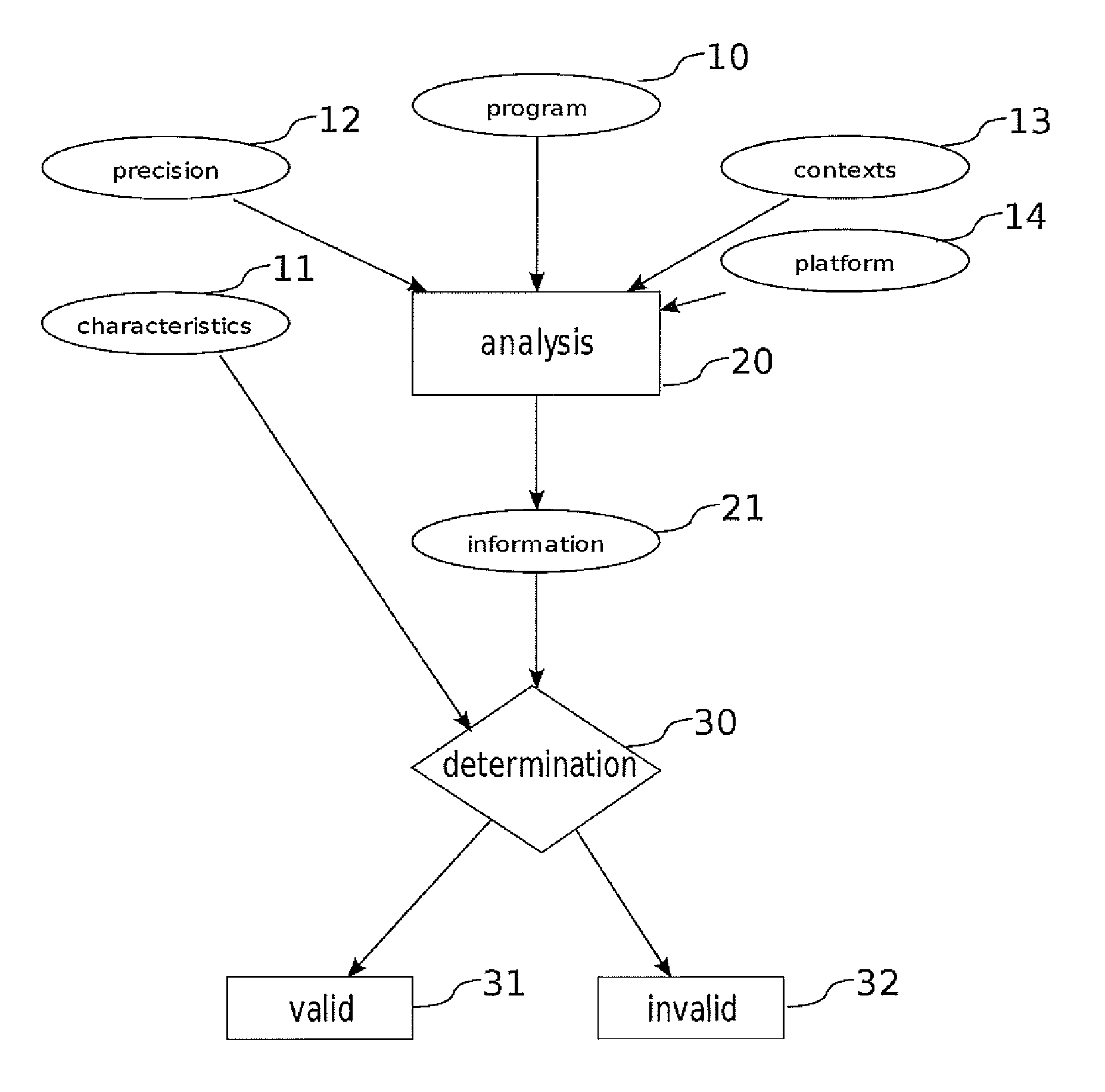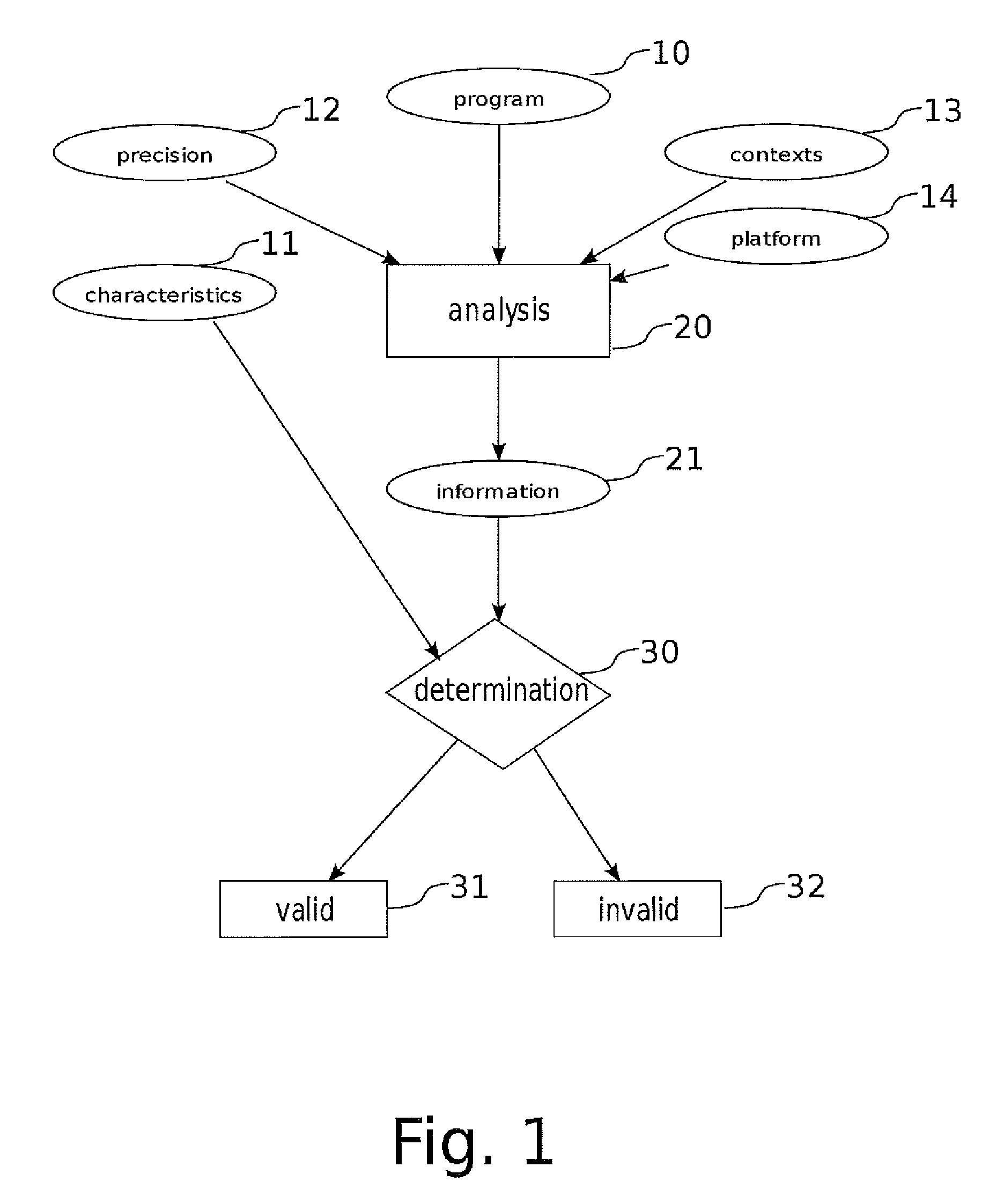Method for determining operational characteristics of a program
- Summary
- Abstract
- Description
- Claims
- Application Information
AI Technical Summary
Benefits of technology
Problems solved by technology
Method used
Image
Examples
Embodiment Construction
[0051]The present invention, illustrated in FIG. 1, relates to a method for determining operational characteristics of a program 10 using a verification procedure comprising the following steps:[0052]a first step comprising:[0053]expressing the operational characteristics 11 of the program as functions dealing with occurrences or sequences of occurrences of events which may be produced throughout possible executions of the program, said events being able to deal with particular operations, particular values, at particular points of the program and in particular states of the program;[0054]determining a possible level of precision 12 with which these characteristics must be determined;[0055]determining a possible set of particular contexts of execution 13 in which the program will always be executed;[0056]determining possible operational specificities of a set of platforms 14 on which the program will be executed;[0057]a second step of estimation, by program analysis 20, and by consi...
PUM
 Login to View More
Login to View More Abstract
Description
Claims
Application Information
 Login to View More
Login to View More - R&D
- Intellectual Property
- Life Sciences
- Materials
- Tech Scout
- Unparalleled Data Quality
- Higher Quality Content
- 60% Fewer Hallucinations
Browse by: Latest US Patents, China's latest patents, Technical Efficacy Thesaurus, Application Domain, Technology Topic, Popular Technical Reports.
© 2025 PatSnap. All rights reserved.Legal|Privacy policy|Modern Slavery Act Transparency Statement|Sitemap|About US| Contact US: help@patsnap.com


